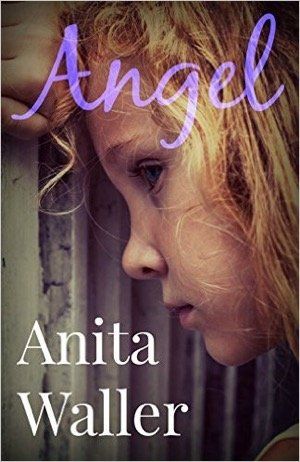
A good measure of how much a book affects you is how much of it stays with you months, or years, later. Anita Waller’s debut Beautiful, which I reviewed here for New Talent November last year, is full of the kind of scenes that you will recall vividly months, or even years, later. The way that Beautiful alternates between rapist Ronald Treverick’s internal narrative and unflinching descriptions of his crimes makes for some truly unforgettable reading.
The sequel Angel opens in similarly chilling fashion. It is now the early 21st century and Treverick has a new victim, a seven-year-old he calls Angel. After being chained up in his small cottage from shortly after her birth, and being sexually and physically abusing from her seventh birthday, Angel finally manages to escape and find her way to a friendly home, and eventually the police. But Angel is a broken child, abused for most of her life, and it’s going to be a long time before she lives the life a little girl should. Angel’s crime was merely that she was the grandchild of Amy Andrews, Treverick’s first victim. For that, the small child is a pawn in Treverick’s continuing quest for revenge.
Meanwhile, Angel’s parents Lauren and Pilot have never given up on their daughter, who was stolen on the day of her birth – Christmas 1995. When they hear about the lost and abused little girl, their thoughts turn first to protection. Later on, as details of the horrific abuse suffered by Angel (who they know as Grace) emerge, it becomes clear that this is part of Treverick’s continuing pursuit of revenge. Given the details of her captivity – chained and abused, and never allowed to talk to anyone except her “daddy” – it’s hard to imagine Grace ever living a normal life, but with the help of a few dedicated police officers, a devoted family and a couple of Harry Potter books, she begins to recover.
Like Beautiful, Angel features occasionally unsettling insights into Treverick’s internal narrative. These italicised sections are shorter than in Beautiful, but still give a terrifying sense of Treverick’s mind. But while Beautiful is dominated by the psychology of both criminal and victim, Angel also features elements of a police procedural. As Treverick sets out to get his revenge on Angel’s family, the police begin to suspect that someone on the inside – a family member, a police officer, or one of the guards hired to protect the family – is giving him information.
As the police search for the leak in Lauren’s household, Treverick works his way through the family, intent on killing one member after another until Angel is his again. He becomes increasingly desperate as the net closes around him, exposing himself to more and more dangers as he tries to terrify the family into action. As Treverick’s reason begins to slip away and the police come closer to locating him, there are fewer and fewer sections from his point of view, which is unfortunate as these psychological exposés are a strength of Waller’s writing. Another strength is the author’s depiction of Cornwall – a region she seems to have an instinctive feel for – and despite the horrific events depicted in Angel, I found myself itching to travel to Padstow.
While it may work as a standalone novel, Angel is best read together with Beautiful – characters in Angel are not fully realised, with little back story given, other than that which is already in Beautiful. Without knowledge of the original it is not always easy to follow the sequel, and many aspects of the back plot aren’t clear until about a third of the way through Angel. This is particularly important because, while moments and scenes from Beautiful still stay with me months later, details of the plot itself (including the ending) are easily forgotten, and it is best to read Angel with these necessary details fresh in your mind.
Bloodhound Books
Print/Kindle
£0.99
CFL Rating: 4 Stars








